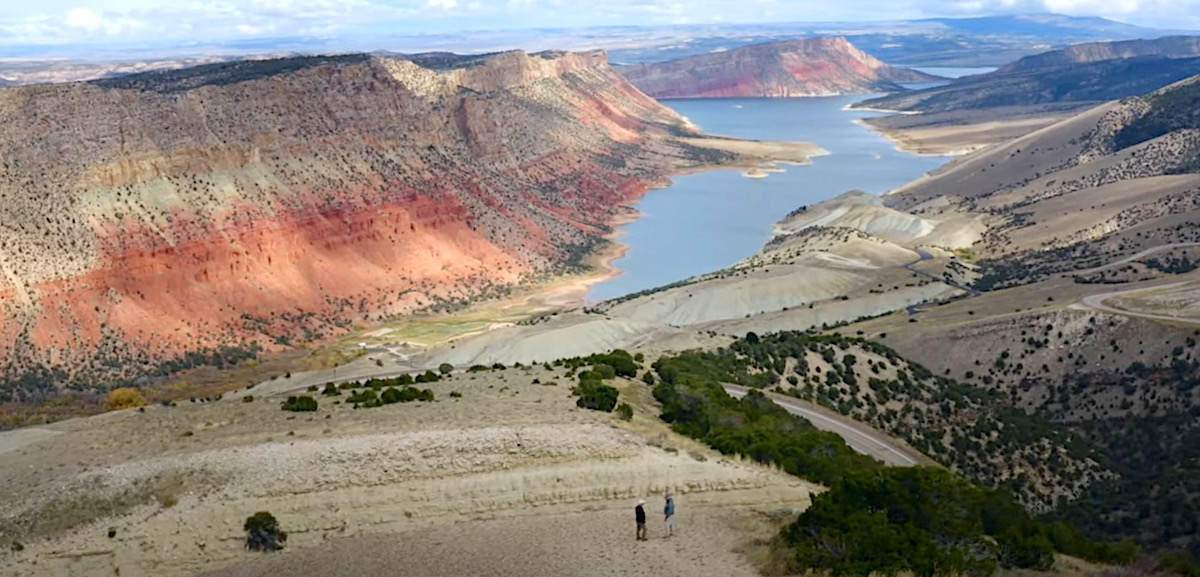One of the topics that comes up often in our new film, Mountains After the Flood, is the concept of the “geologic column.” It’s not a simple concept, so we put together an explanation along with two video segments at the end to help you understand it. Once you do, however, it helps you see how to interpret rock layers in light of Genesis.
If you study the walls of the Grand Canyon, you will notice they consist of thick extensive layers of rock stacked one on top of another. This stack of layers is similar to other stacks of layers found all over the world. In fact, it’s likely that beneath your feet right now is a stack of layers several miles deep.
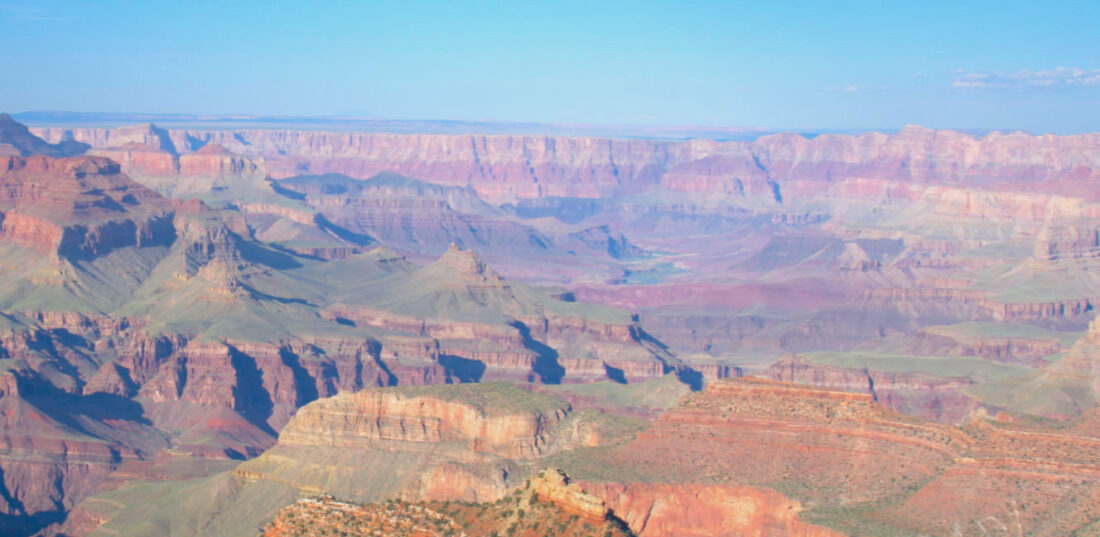
But not all stacks of rock layers are the same. Rock layers found in one location are often missing in another location. This could be because some layers were never laid down; or it could be that after the layers were laid down, they were eroded away. As a result, there is no single place on earth where all the layers are stacked together. Instead, each area has its own unique sequence of layers.
For instance, the Grand Canyon region has one of the most impressive stacks of layers in the world. And yet, as we saw in our first film, if you travel 70 miles south to the Sedona region, you can see layers which are missing in the Grand Canyon.
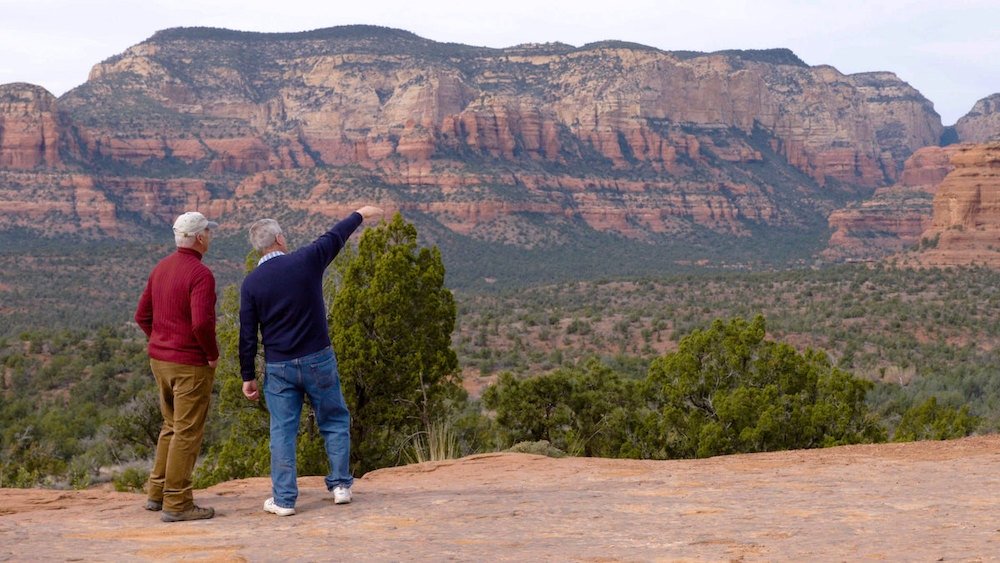
A Geological Stack
In the late 18th and 19th centuries, geologists began to compare sequences of layers from different locations to see how they related to each other. Over time, they developed a conceptual ordering of all the rock layers on the earth. This representation is called the geologic column.
It’s important to note that the geologic column is a man-made concept. Different sequences of layers in different locations were merged together to form a single conceptual column of over a hundred different layers. The geologic column is real because it is a compilation of actual sequences of real rock layers, and as a concept it does tell us something about the order of layers around the earth.
How did geologists determine that order?
The geologic column is primarily based on the logical principle of superposition. This is the idea that when sediment is first laid down into a layer, it is flat. Any flat layers found on top of that layer must therefore have been laid down afterwards. When the principle of superposition is applied consistently, one can generally determine a sequence of layers.
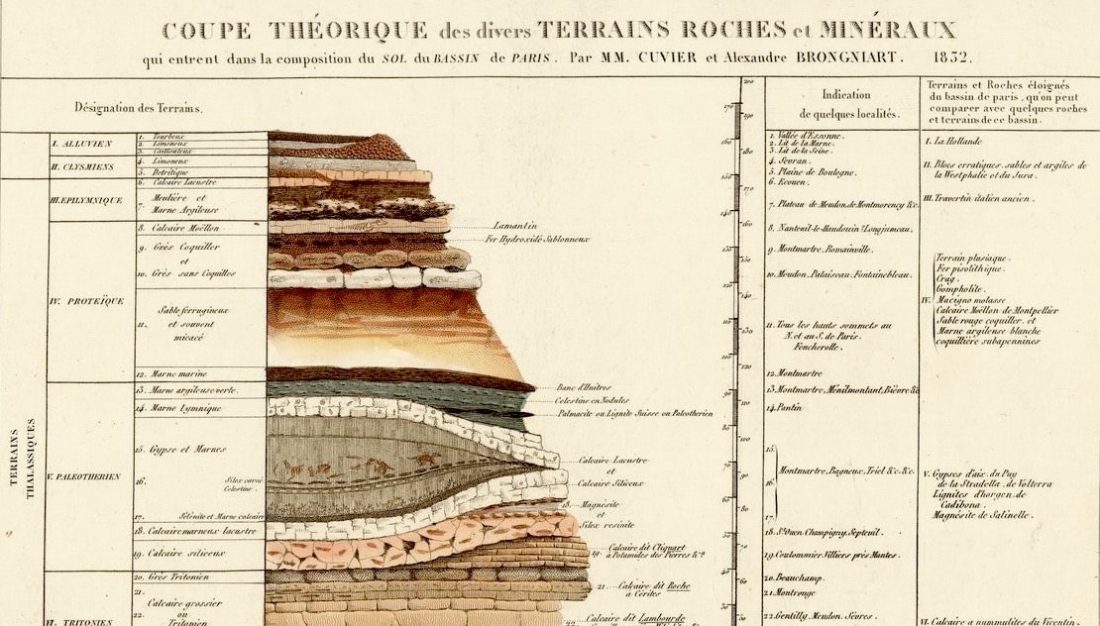
Along with that, geologists also correlated specific layers stretching across long distances with layers that were more local. They compared the size and shape of minerals and sediment grains, as well as the different fossils found in different layers. Many factors were considered over many decades to construct the standard geologic column.
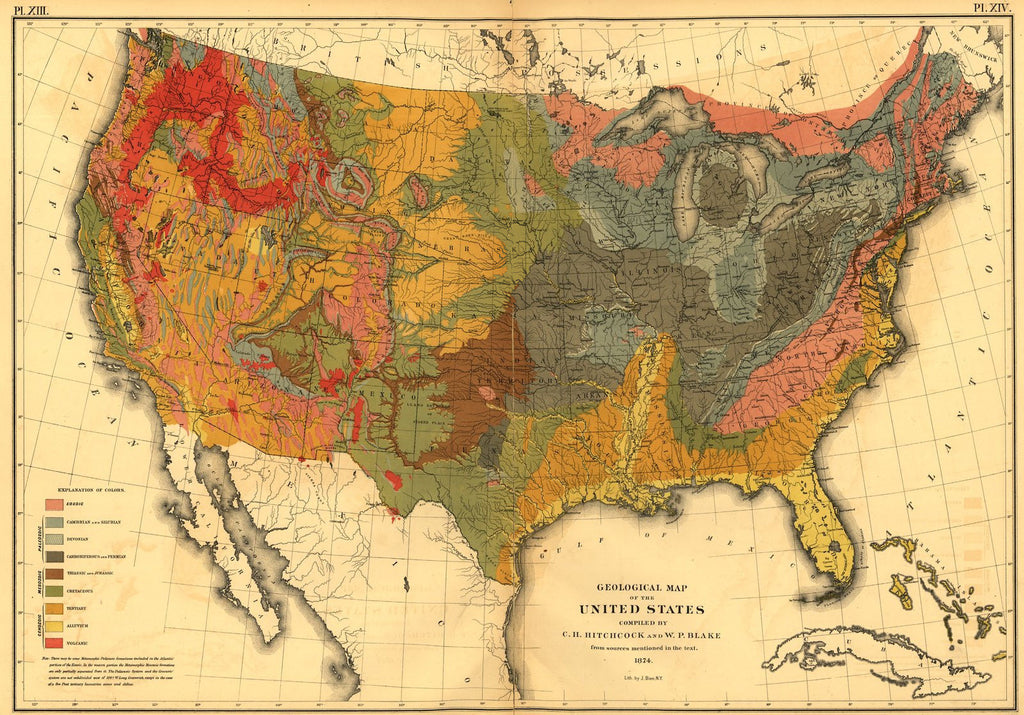
Rocks & Time
At first, the order of layers was determined without any significant time consideration. However, assumptions about earth history and the events that formed all those layers began to influence how one interpreted the layers.
For instance, geologists in the 17th century thought the layers were laid down before, during, and after the Flood. All the layers therefore represented only thousands of years of earth history. The next generation of geologists thought only the highest layers were laid down by the Flood. This meant that all the layers beneath it represented hundreds of thousands of years before the Flood.
Eventually, geologists rejected the idea of the Flood and began to think in terms of millions of years for the age of the earth. Today, conventional geologists think the geologic column represents billions of years of earth history.
Creation scientists, however, look at the layers in the earth and think they are better explained by the events recorded in the Bible. As a result, they think the geologic column represents only thousands of years of earth history.
Although they disagree about time, conventional and creation geologists do agree that the geologic column can be divided into four major divisions. Those divisions are referred to as the Precambrian (lowest/oldest), the Paleozoic, the Mesozoic, and the Cenozoic (highest/youngest).
Those divisions can be further divided into systems or groupings of layers. For example, the Mesozoic consists of the Triassic, Jurassic, and Cretaceous systems of layers. And although we will not discuss these, there are more groups within each of the systems.
The geologic column is complex. Nevertheless, we can use the events and timeline recorded in Genesis to help us figure out when the various layers were formed. Below are two charts that you can expand to see the stacks of layers relative to one another. The first one shows the relative difference between the depth of the layers. The second one divides the layers into different groups and provides a comparison of the dating schemes. (Click on the images to expand them.)
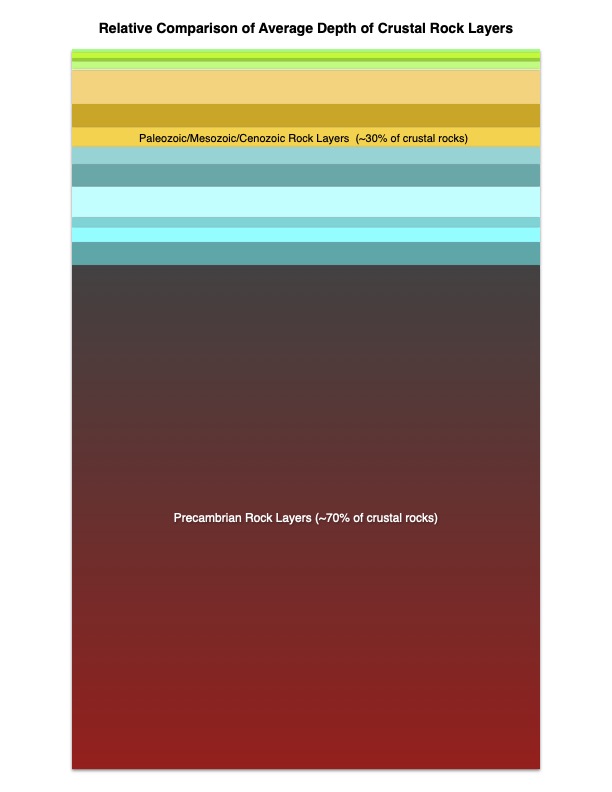

Precambrian Layers
To start with, Precambrian layers of rock go very deep and include many distinctive and unique features. They represent about 70% of the rocks in the earth’s crust. Except for a few of the very highest Precambrian layers, there are no complex animal fossils in any other Precambrian rocks, or for that matter, much life at all, except for algae and other microscopic forms.
Most creation geologists think that the majority of Precambrian rocks were formed during Creation Week. Some of the highest layers could have formed before or at the start of the Flood. The Precambrian contains important ores and minerals, such as banded iron formations. It consists of metamorphic, sedimentary, and igneous rock layers, but often with unique characteristics.
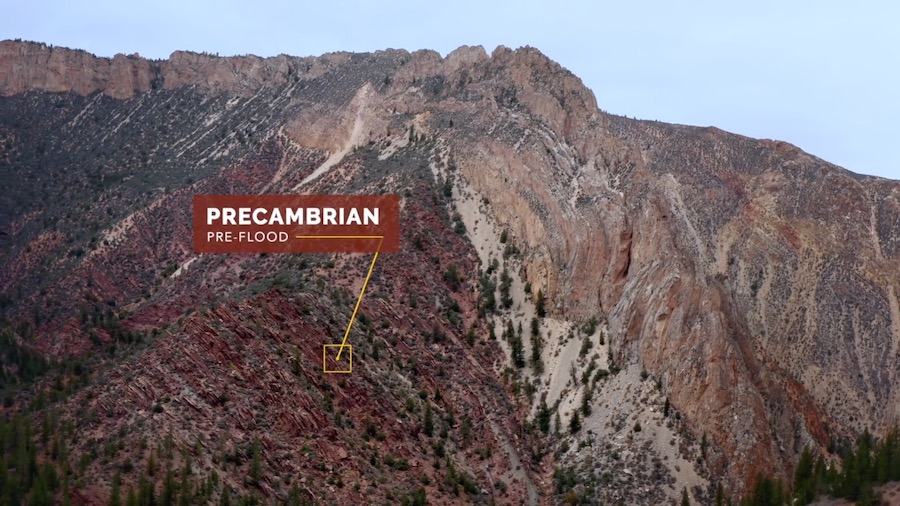
There is, however, a major difference between the rock layers in the Precambrian and the rock layers resting on top of it. Whereas the Precambrian is basically lifeless, those rock layers above it are filled with trillions of marine and land fossils. These fossil-bearing rocks appear quite suddenly, often being deposited on top of an erosion surface known as the Great Unconformity that has been recognized as almost global.
As a case in point, the layers that occur just above the Precambrian are called the Cambrian (hence the name “pre-cambrian”). Those Cambrian layers include the famous Cambrian explosion referred to in our first film. This “explosion” refers to the sudden appearance in the rock record of an enormous variety of complex marine fossils. These fossils signify the start of the first of three fossil-bearing divisions of layers known as the Paleozoic.
Paleozoic Layers
The term Paleozoic means “old life” (paleo = old; zoic = life). It is not a creationist term but instead reflects the conventional view that the rock layers within the Paleozoic are between 539 and 252 million years old. To a conventional scientist, the fossils found within those layers must therefore represent some of the oldest forms of complex life on earth.
The Paleozoic is divided into sub-groups of ascending layers. These start with the Cambrian (lowest), Ordovician, Silurian, Devonian, Carboniferous (also known as Mississippian and Pennsylvanian), and finally Permian (highest). The Paleozoic layers make up about 55% of the fossil-bearing rock layers.
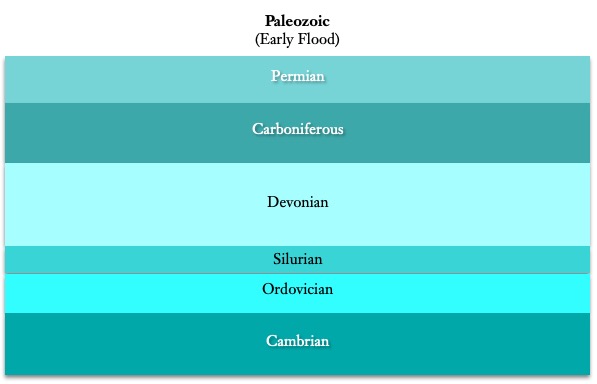
In contrast to the conventional view, a creation geologist would interpret the fossils in the Paleozoic as being the initial marine and amphibian fossils captured during the Flood. The fossils found in the Paleozoic were all living at the same time, but, for various reasons, were fossilized at different points during the first half of the Flood. This is why there is a particular order of fossils found ranging from the Cambrian layers to the Permian layers.
It is here that Dr. Andrew Snelling’s Grand Canyon research intersects our discussion. The primary rock layer featured in the film is the Tapeats Sandstone. The Tapeats is at the bottom of the Paleozoic layers and is conventionally dated at 507-508 million years old. If, however, it can be demonstrated that Tapeats Sandstone layer folded when it was still soft, it cannot be hundreds of millions years old.
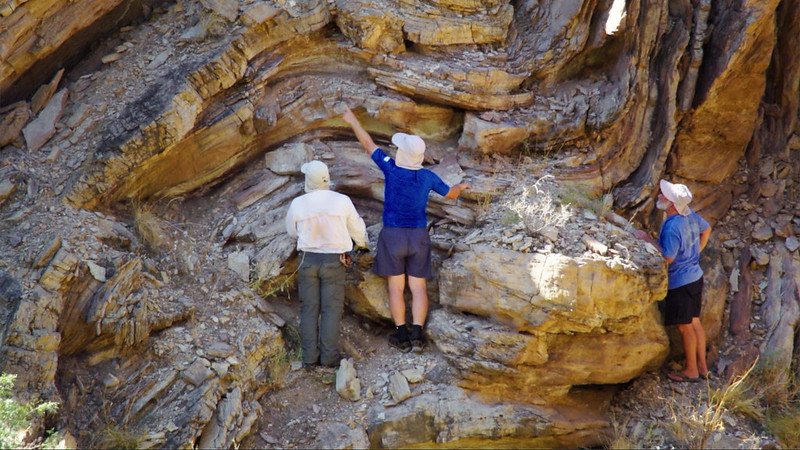
According to the principle of superposition, therefore, if the Tapeats is not very old, none of the layers above it can be very old. Dr. Snelling’s findings therefore redefine the timing of the geologic column and all the fossils distributed throughout those layers.
This is why his research is so important. It retimes the entire geological record into the context of the history of Genesis.
Mesozoic Layers
What is above the Paleozoic? The next major division of layers is called the Mesozoic, or “Middle Life.” Again, this term was coined by conventional scientists who think the rock layers within that division are between 252 and 66 million years old. These layers include fossils of all the dinosaurs, many unique mammal and amphibian species, as well as marine, avian, and botanical species.
The sub-groups of layers within the Mesozoic are the Triassic (lowest), Jurassic, and Cretaceous (highest). The Mesozoic layers make up about 35% of the fossil-bearing rock layers.

To a creation geologist, the Mesozoic layers are evidence that the Flood covered the continents. The sediment left behind fossilized many land and air-dwelling creatures from different regions, often with marine fossils. The enormous graveyards of millions of dinosaur bones are evidence for widespread, rapid burial.

Yet at the top of the highest levels of the Cretaceous, the dinosaur fossils suddenly disappear. In the layers just above them, we find something extremely interesting.
Cenozoic Layers
What is above the Mesozoic? The final division of layers is called the Cenozoic or “Recent Life.” Although the term reflects the conventional view that the layers include animals fossilized from 66 million years ago to the present day, a creationist would also consider these fossils to be more recent in comparison to the pre-Flood creatures captured in the Flood.
There are also sub-groups of layers in the Cenozoic, starting with the Paleocene (lowest), Eocene, Oligocene, Miocene, and Pliocene (highest). The Cenozoic layers make up about 10% of the fossil-bearing rocks.

To a creation geologist, the transitional layers between the Mesozoic and Cenozoic reflect the end of the Flood and the beginning of the post-Flood period. The layers of the Cenozoic are therefore evidence of continuing catastrophic geological processes slowly declining in strength after the Flood. There are a number of reasons for thinking this way about the Cenozoic.
First, the layers found in the Paleozoic and Mesozoic often stretch across entire continents, and, in some cases, across multiple continents. In comparison, the layers found in the Cenozoic are more regional and often appear in basins and lowland areas, filling the areas between higher regions such as mountains and plateaus.
Second, in many places the Paleozoic and Mesozoic layers are folded, upturned, and even pushed on top of one another. These layers have also been subjected to enormous amounts of erosion. Cenozoic layers, on the other hand, are sometimes found in horizontal layers on top of the upturned and eroded layers. In the film, we see this unique phenomenon in the Green River Basin where the flat layers filled what was a lake basin formed on top of the tilted and folded Paleozoic and Mesozoic layers.

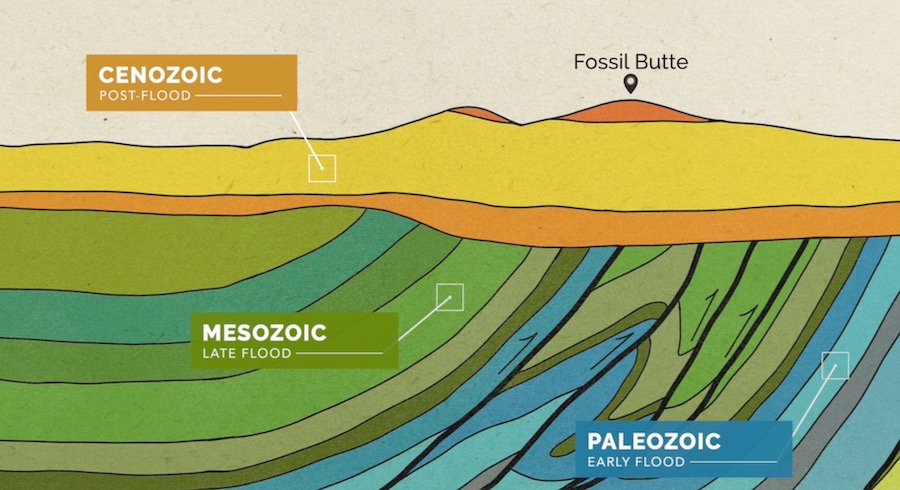
Third, the fossils found in the Cenozoic are quite different from those found beneath it. Whereas the Mesozoic is filled with dinosaurs and many other extinct marine fish and animals, all the major kinds of modern mammals just suddenly appear in the lowest layers of the Cenozoic. Furthermore, there is very little evidence of marine creatures on the continents in the Cenozoic.
Dr. John Whitmore discusses this strange phenomenon in the film when he talks about the bats and other creatures found in the Green River Formation. They just suddenly appear alongside other land animals and flying creatures with no clear ancestors in the layers beneath them. These can thus be interpreted as the animals that migrated from the Ark to then get buried in this post-Flood lake’s bottom sediments.
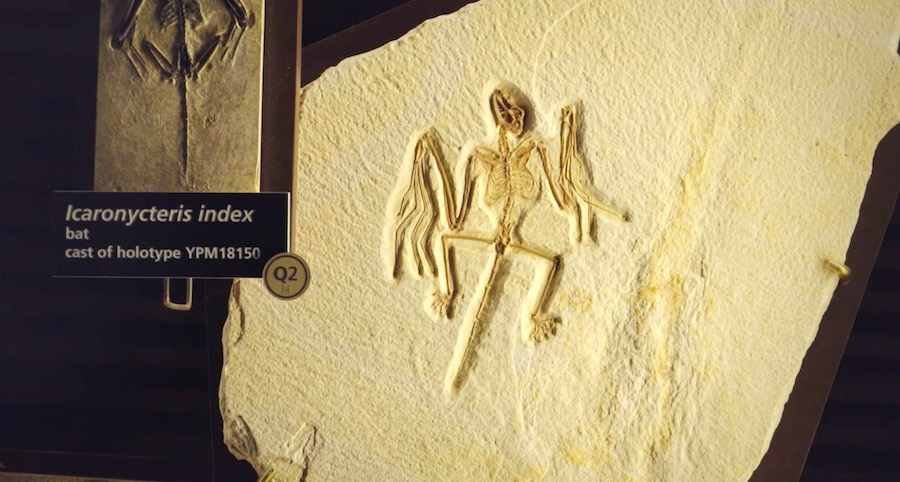
Finally, there is strong evidence of diversification within these created animal kinds. This can be seen starting at the lowest levels of the Cenozoic and continuing in a single lineage into the recent past. These include the horse kind, the bear kind, the camel kind, and many other kinds. In fact, it is these diversifications within kinds that are often pointed to as an evolutionary sequence, although all the precursors are strangely missing from the fossil record and these are just varieties within these animal kinds.
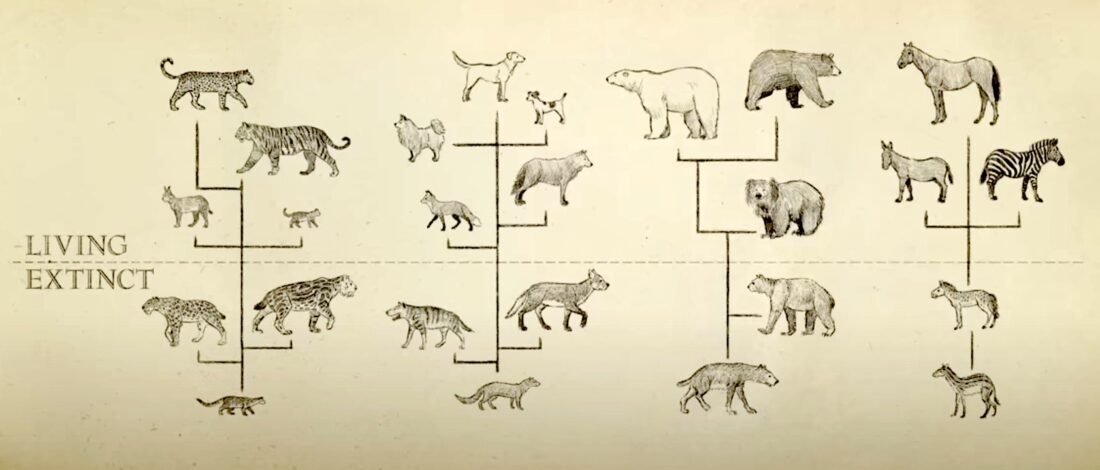
In fact, it is the fascinating contrast between the Mesozoic and the Cenozoic that is strong evidence for the Flood and its catastrophic aftermath.
A creation geologist would expect the change from continental layers laid down during the Flood to local layers laid down in the Post-Flood period. He would expect the majority of the lower layers to be deformed and heavily eroded while the highest local layers were more flat and less deformed. He would also expect to find huge fossil graveyards in the lower layers, while finding the burial of smaller localized ecosystems (such as a lake environment) in the highest layers. Finally, he would expect to find rapid diversification of created kinds within a region, revealing quickly-changing adaptations in order to adjust to new environments and situations after the Flood.
In other words, there are good reasons for thinking that the Cenozoic represents the end of the Flood and Post-Flood period.
Quaternary Layers
Finally, there are sporadic deposits produced during the post-Flood Ice Age known as the Quaternary. The warm ocean waters at the end of the Flood generated enormous storms that dumped heavy rain in equatorial latitudes but snow in the continental interiors in more polar latitudes that were cold due to all the volcanic dust blocking the sun’s warmth. Thus, ice sheets and mountain glaciers developed and advanced, then retreated when the storms subsided as the ocean waters cooled and the storms eased. Their retreat left behind sporadic localized glacial debris in moraines and rock flour layers.
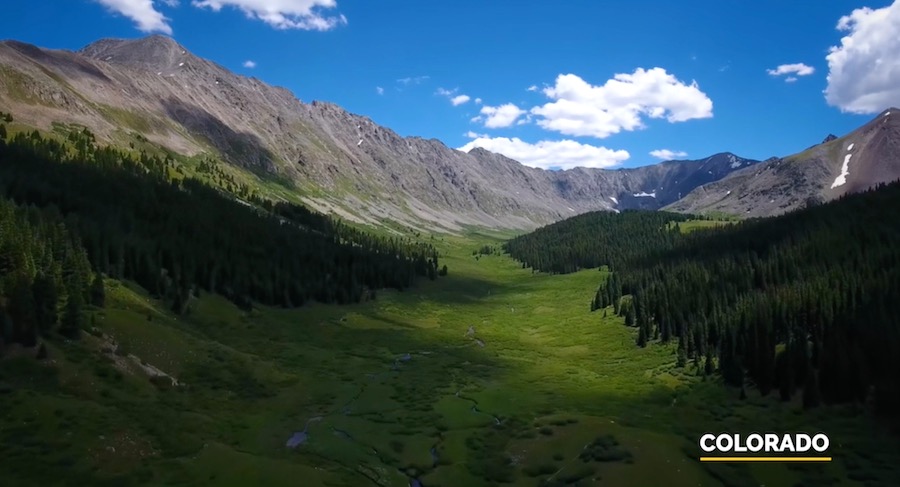
In Closing
This overview of the geologic column is necessarily brief. It unfortunately leaves out many additional evidences for understanding the rock layers in light of the history recorded in Genesis. We also have not had time to discuss the many questions that still remain in regard to the geologic column in terms of a creationist interpretation of the rocks and fossils.
Nevertheless, a creationist interpretation of the geologic column is a powerful interpretational structure for understanding the earth in light of the history recorded in Genesis.
If you have not yet had a chance to watch our sequel, Mountains After the Flood, you should take some time to do so. It provides extensive evidence for a young earth that was re-shaped by the Flood, then massively deformed at the end of the Flood and into the post-Flood era.
Here’s a clip from the film where Dr. John Whitmore uses the geologic column to explain the layers he is seeing around him:
Dr. Marcus Ross, paleontologist, also gives an excellent explanation of how the fossil record links up to the geologic column. This is a segment from our Beyond Is Genesis History? Vol 1 Rocks & Fossils.
